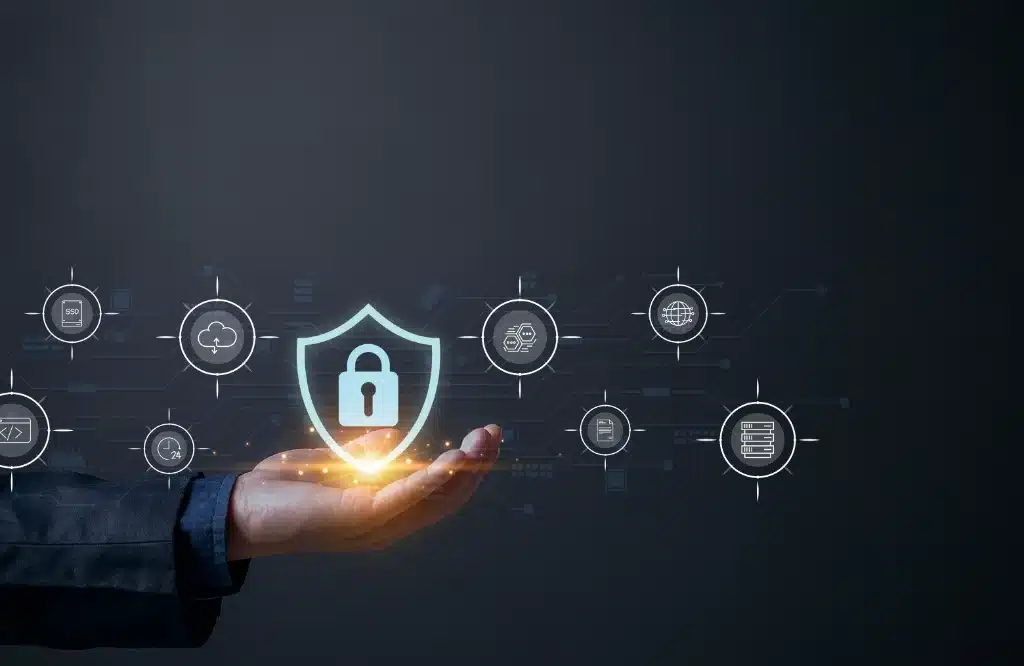
Cybersecurity Awareness Month is the perfect time to evaluate and update your company’s defenses, but if you find that your business is relying on a single cybersecurity solution, your problems go beyond what a simple update can fix. Today’s cyberthreats are more sophisticated than ever, often combining multiple attack methods to exploit weaknesses across different layers of your IT environment.
To stay protected, even small and mid-sized businesses (SMB) like yours need a multilayered cybersecurity strategy that defends your data, devices, and networks from every angle.
Why do businesses need a multilayered cybersecurity approach?
In the ancient days of the internet (20 years ago), you could get by with a simple antivirus program because there was really only one threat to your business network: a computer virus that infects your servers.
But after decades of growth and evolution, cybercriminals and their attacks have become more complex and multifaceted than anyone could have imagined back then. Ransomware, phishing, zero-day attacks, Internet of Things (IoT) device hacking — the list goes on and grows longer all the time.
In addition to the new kinds of attacks, your network also has many more possible entry points as more technology becomes required for success in the modern market.
For example, you may have a cloud network, VoIP phones, internet-connected printers, or any number of new, productivity-boosting tools connected to your network. Each of these is another possible avenue for attackers to penetrate your network and cause damage.
Cybercriminals can attack your business in a multitude of ways from multiple different angles, so your cybersecurity posture must be equally multifaceted.
What are the primary elements of an effective multilayered cybersecurity posture?
Here are the core components every SMB should include in its cybersecurity posture.
A strong information security policy
Every effective cybersecurity strategy begins with a well-defined information security policy. This document outlines your company’s rules, procedures, and expectations for handling and protecting sensitive data. This is doubly important if you have data security compliance obligations.
Without this foundation, even the best technology can fail due to human error or unclear procedures.
Physical security measures
While digital threats dominate the headlines, physical security remains a critical part of cybersecurity. With the rise of insider threats, don’t make the mistake of thinking you don’t have to worry about tampering with your hardware.
Implement measures such as:
- Secured server rooms and locked network cabinets
- Visitor logs and employee ID access cards
- Security cameras in key IT areas
Comprehensive network security
Your network is the backbone of your IT operations, and it must be continuously protected from all angles and threat types. Comprehensive network security combines multiple layers of defense, including:
- Firewalls to filter malicious traffic
- Intrusion detection and prevention systems
- Secure Wi-Fi configurations
- Virtual private networks for remote employees
Depending on your operational needs, more security tools may be required. Ask a network security consultant for guidance on what your network’s unique needs are.
Regularly scheduled updates and maintenance
Cybercriminals often exploit vulnerabilities in outdated software or unpatched systems. That’s why regular updates and preventive maintenance are nonnegotiable. These not only enhance security but also improve system performance and reliability. Set a schedule for these routine tasks and stick to it, or enlist the help of a managed IT services provider for a professional maintenance plan.
Access control measures
Strong systems and data access control policies ensure that employees only have the permissions necessary to perform their roles and that your risk is minimized if login credentials are stolen.
Implement principles and measures such as:
- The least privilege model, limiting access to essential resources only
- Multifactor authentication (MFA)
- Role-based access controls (RBAC) for managing user privileges
Data backups
No security posture is foolproof, so you need data backups to protect against data loss from ransomware, system failures, or human error. Your backup strategy should follow the 3-2-1 rule: keep three copies of your data, stored on two different media types, with one copy kept off site or in the cloud.
Continuous, proactive cybersecurity monitoring
Real-time monitoring and threat detection are crucial for identifying suspicious activity before it escalates and causes damage.
A proactive monitoring approach includes:
- 24/7 network surveillance by a security operations center (SOC)
- Automated alerts for unusual user behavior
- Incident response and remediation workflows
There’s no better time than Cybersecurity Awareness Month to revamp your security posture. Contact SpectrumWise today for a FREE cybersecurity audit, and find out how we can protect your network and assets from emerging cyberthreats.
